Inside\Within is a constantly updating web archive devoted to physically exploring the creative spaces of Chicago's emerging and established artists.
Support for this project was provided by The Propeller Fund, a joint administrated grant from Threewalls and Gallery 400 at The University of Illinois at Chicago.

Search using the field below:
Or display posts from these tags:
3D printing 3D scanning 65 Grand 7/3 Split 8550 Ohio 96 ACRES A+D Gallery ACRE animation Art Institute of Chicago Arts Incubator Arts of Life audio blogging Brain Frame CAKE Carrie Secrist Gallery casting ceramics Chicago Artist Writers Chicago Artists Coalition Chicago Cultural Center Cleve Carney Art Gallery Clutch Gallery Cobalt Studio Coco River Fudge Street collage collection Columbia College Chicago Comfort Station comics conceptual art Contemporary Art Daily Corbett vs. Dempsey Creative Capital DCASE DePaul University design Devening Projects digital art Dock 6 Document drawing Duke University dye Elmhurst Art Museum EXPO Chicago Faber&Faber fashion fiber Field Museum film found objects GIF Graham Foundation graphic design Harold Washington College Hatch Hyde Park Art Center illustration Image File Press Imagists Important Projects ink installation International Museum of Surgical Science Iran Jane-Addams Hull House Museum jewelry Joan Flasch Artist's Book Collection Johalla Projects Julius Caesar Kavi Gupta Links Hall Lloyd Dobler LVL3 Mana Contemporary metalwork Millennium Park Minneapolis College of Art and Design Monique Meloche Museum of Contemporary Art Chicago (MCA) Museum of Contemporary Art Detroit (MOCAD) Museum of Contemporary Photography (MoCP) National Museum of Mexican Art (NMMA) National Resources Defense Council New Capital Northeastern Illinois University Northwestern University Ox-Bow painting paper mache Peanut Gallery peformance Peregrine Program performance photography PLHK poetry portraiture printmaking public art Public Collectors publications Renaissance Society risograph rituals Roman Susan Roots&Culture SAIC screen printing sculpture Sector 2337 Shane Campbell Silver Galleon Press Skowhegan Slow Smart Museum Soberscove Press social practice South of the Tracks Storefront SUB-MISSION Tan n' Loose Temporary Services Terrain Terrain Biennial text-based textile textiles The Banff Centre The Bindery Projects The Cultural Center The Franklin The Hills The Luminary The Packing Plant The Poetry Foundation The Poor Farm The School of the Art Institute of Chicago (SAIC) Threewalls Tracers Trinity College Trubble Club University of Chicago University of Illinois at Chicago (UIC) University of South Florida at Tampa Valerie Carberry Vermont Studio Center video weaving Western Exhibitions wood carving woodwork Yellow Book Yollocalli Arts Reach zinesInside\Within is produced in Chicago, IL.
Get in touch:
contactinsidewithin@gmail.com
Tom Burtonwood: Object as Infinite Producer
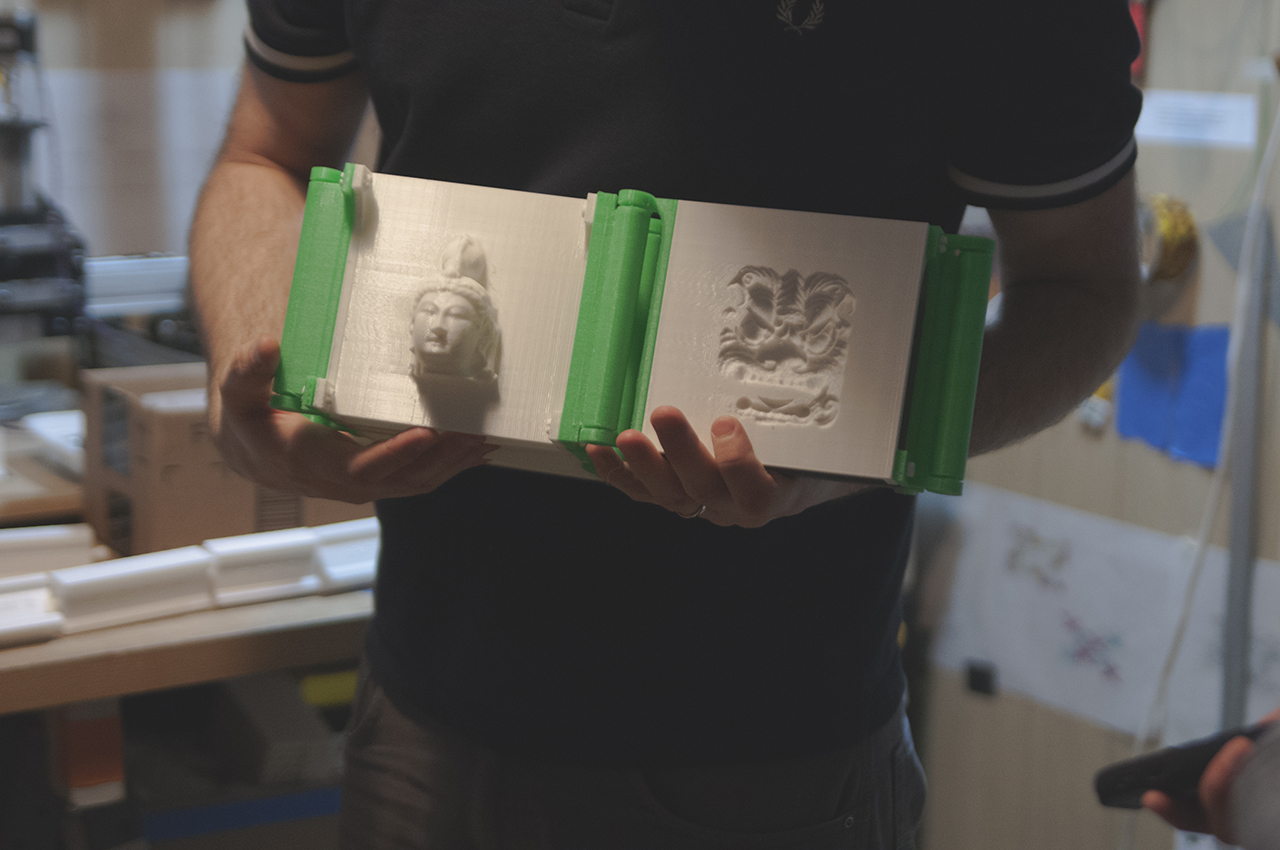
Due to his interest in the lineages between art objects’ reference material, Tom produces 3D printed work that can be quickly linked back to its original source. He has designed and printed two books that allow one to easily copy the objects within their 3D pages—serving as a source for continuous reproduction and an open-sourced object that features the instructions for its creation online.
I\W: How are 3D printers both the content creators and the content themselves?
I did a piece that is sort of related to that idea paraphrasing Marshall McLuhan, that stated “3D printing is the medium and the message.” I guess what I was getting at with that is that the 3D printer and 3D print both contain the instructions for making them and for the content being transmitted. On the one hand you have open source 3D printing via the RepRap project. In the case of RepRap, the schematics for the machines themselves are shared online freely. They are designed with 3D printed or digitally fabricated parts. So if you have access to a 3D printer or laser cutter then you can make your own machine. In this sense the medium and the message are inextricably linked.
In this context I often think about the Robert Morris piece “Box With the Sound of its Own Making,” where he recorded the sound of the construction of a wooden box and then put a tape player inside of it. The piece would play it in the gallery with this audio. I’m a big fan of Ashley Zelinksie’s series ‘Reverse Abstraction’ where she creates platonic solids embedded with the machine readable code necessary for a computer to rebuild the object. Her idea seems like the logical progression from Alberti’s goal to be able to map an object or sculpture mathematically entirely from a series of points in space. It seems to me with the digital object and the 3D printed object, the meaning and the fabrication are intrinsic, and possibly the same thing.
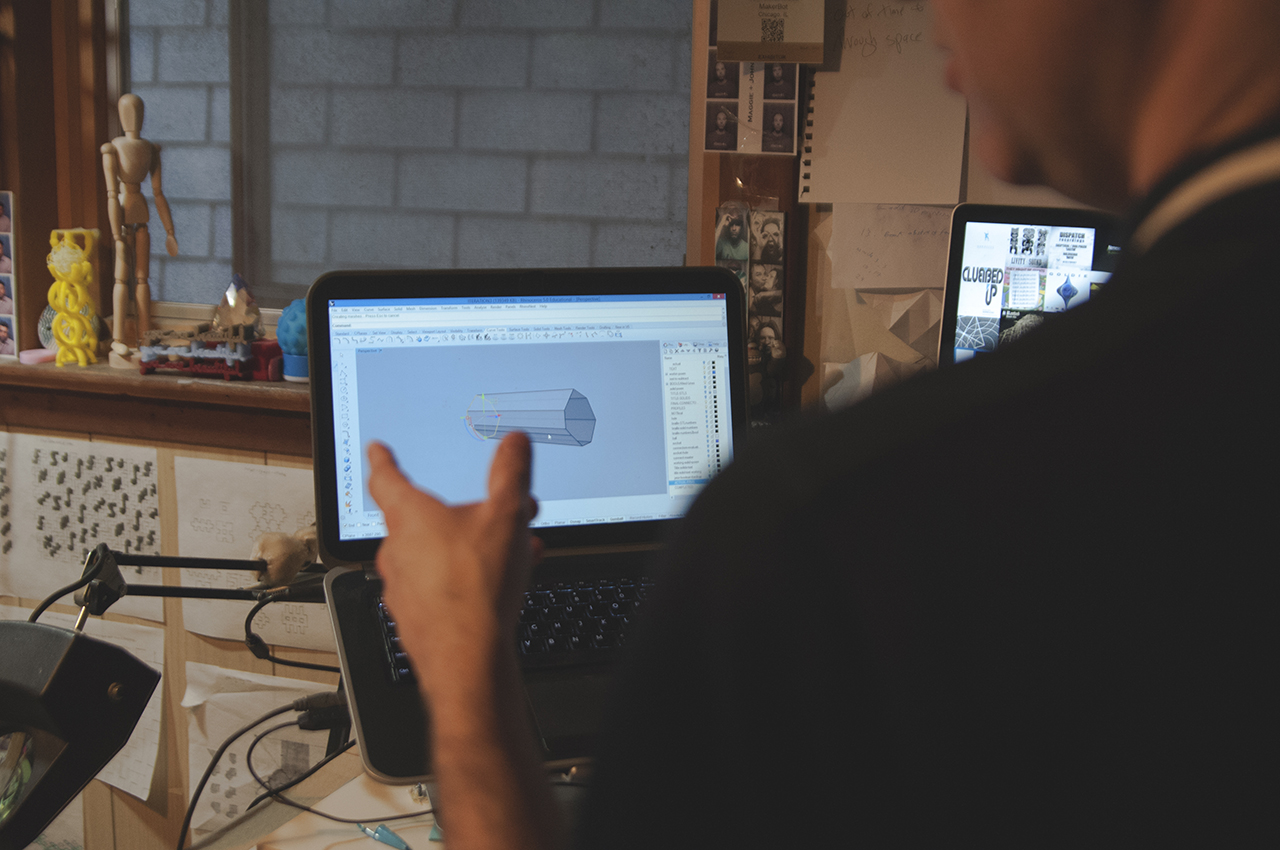
Are you more interested in that sense in the final printed object or in the process of each sculpture being made?
I think I am definitely more interested in the process. I am really fascinated in how the technology changes objects and our relationship to them. A lot of my work really focuses on that kind of conundrum—how these new types of objects are both material and immaterial, how they are both the substance and yet very much in flux. I love the fact that a lot of the objects I make are shared online and people can download and remix them, play with them and come up with their own interpretations as well. At the same time I am very much an object maker. I like to make tangible things. I like the way that this technology extends the type of objects that I can make.
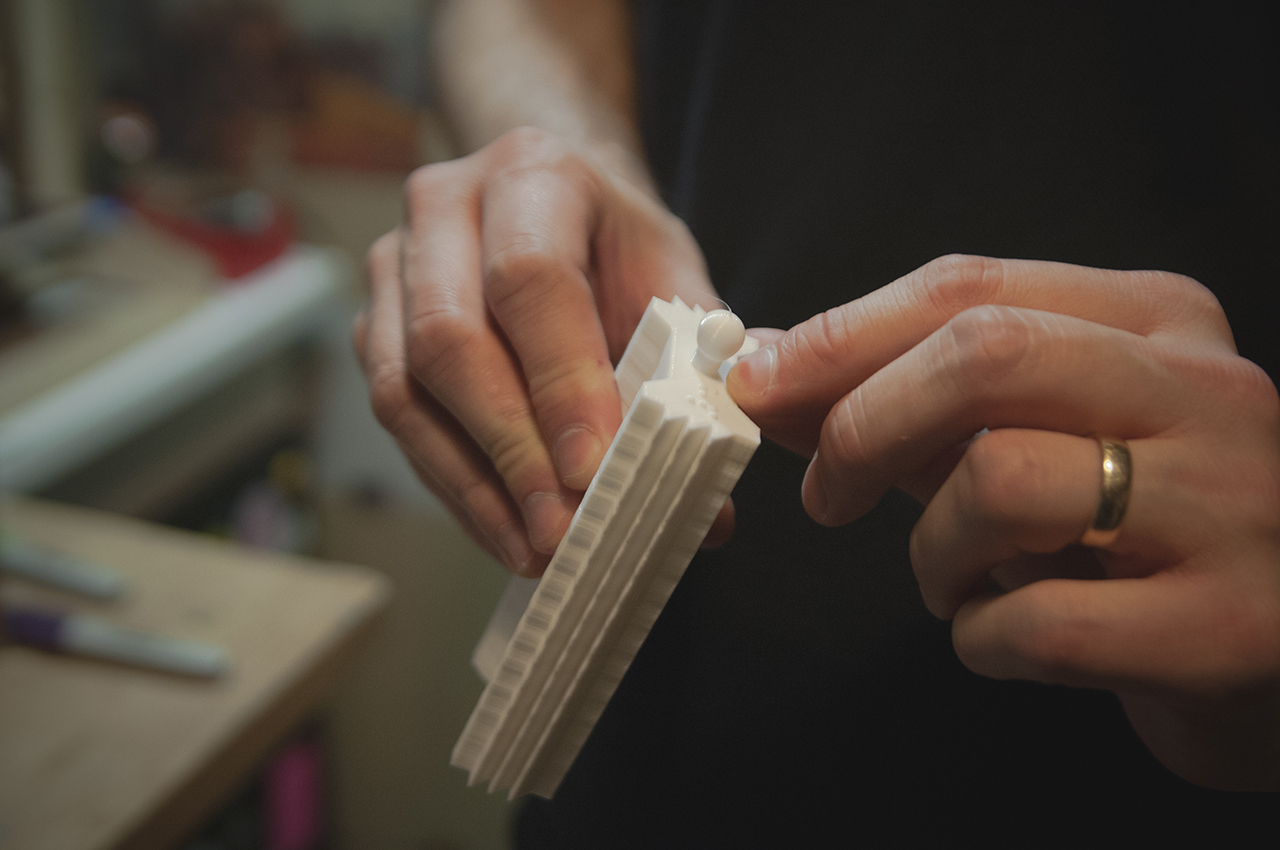
Are you ever manipulating the 3D object post-printing?
Over the past three or four years I have been using the technology I have tried to be fairly pure to the digital object. I haven’t tried to create things that then require another layer of artifice or production to finish the pieces. I rather like the finish, the lines, the quality in which you know this thing is 3D printed. For the most part in terms of post-production or finishing, I create multi-modular pieces that come together to create a larger whole. In that instance you kind of have to put the thing together. In the case of one object that is printing now, I am hand-coloring the plastic, and each one of the prints that comes off of that machine in this series is unique. I could print the same object four times, and each time the striation of colors would be different. Basically what I am doing with this work is taking a Sharpie or fabric dye marker and coloring in the filament so the ink is baked into the plastic. When it goes into the extruder it heats it up and it becomes embedded in the plastic. I also have a wax-like filament, so I can do investment casting. You can pour aluminum or bronze in and go from a 3D print to a bronze or aluminum object.
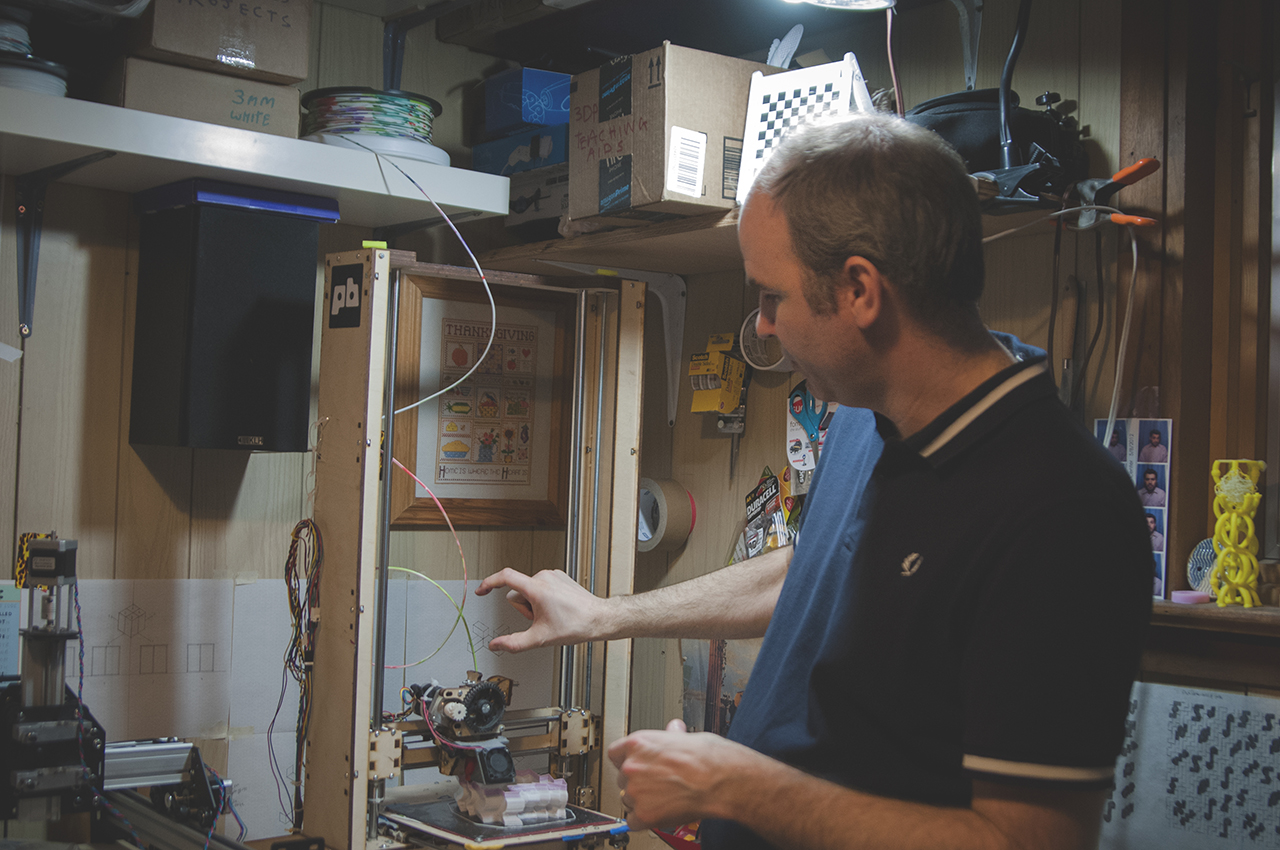
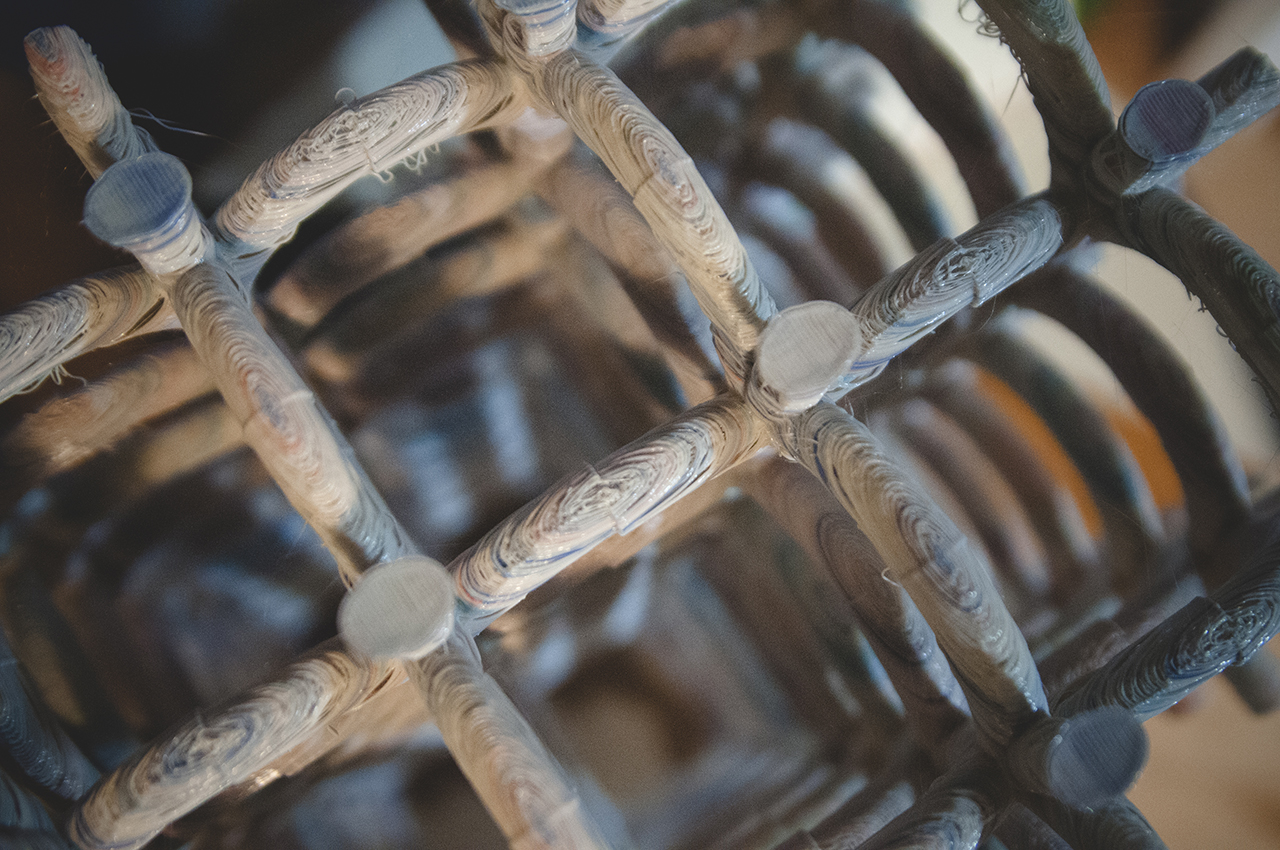
Have you trained yourself to ignore the incessant noises of the 3D printers working in your studio?
No. I actually really love the sound of the machines. They chirp like little birds or mogwai. I know what to listen for when they are behaving themselves. There are noises that they could be making that are much more problematic. If they were clunking, that would be a very bad sign and tell me something is wrong.
I think of the 3D scan like the DNA of an object’s likeness. You take these scans out of time and transmit them through space. Objects are no longer just about their physicality, it is about their immateriality, variability, contingency, etc.
Can you explain your newest series, Plotting Curves?
Plotting Curves is an ongoing series. It’s partly testing the limits of the machine, and eventually I would like to make the forms from ceramic. One of my long-term goals is to build a ceramic extruder which is fairly straightforward, it is just one of those time things that I haven’t gotten to yet. One of the things about extruding ceramic is that there is only so much in terms of overhangs that the machine will actually do before the object will start falling in on itself. In some ways this series is a test run because you can see that on some parts of the surface it is quite stringy and weak. That is because it is extruding plastic where there is no support underneath—it is creating all of these problem areas. Support material is akin to scaffolding, it’s material that the slicing software creates to support overhanging regions of a model. In most desktop 3D printers this material is generated from the same material as the print. The support material usually just breaks away, but it can make producing interlocking or difficult geometry problematic. On more industrial machines the support material is often printed in a separate soluble material and dissolved away after the fact. What I am trying to do with Plotting Curves is develop a workflow to produce complex surfaces that will test the capability of a desktop FFF (Fused Filament Fabrication) machine to print them without support materials. The pieces are designed with modularity in mind and each piece is intended to stack or combine with others to form a larger whole.

Do you view your pieces as time-based as well?
Yes and no. I don’t think of them as as time-based piece as you might think of a video or audio piece necessarily, although I did do some video work at the end of last year with Acre TV, we set up a camera on top of one of the machines and created some long durational prints to see if anything interesting would come of it.
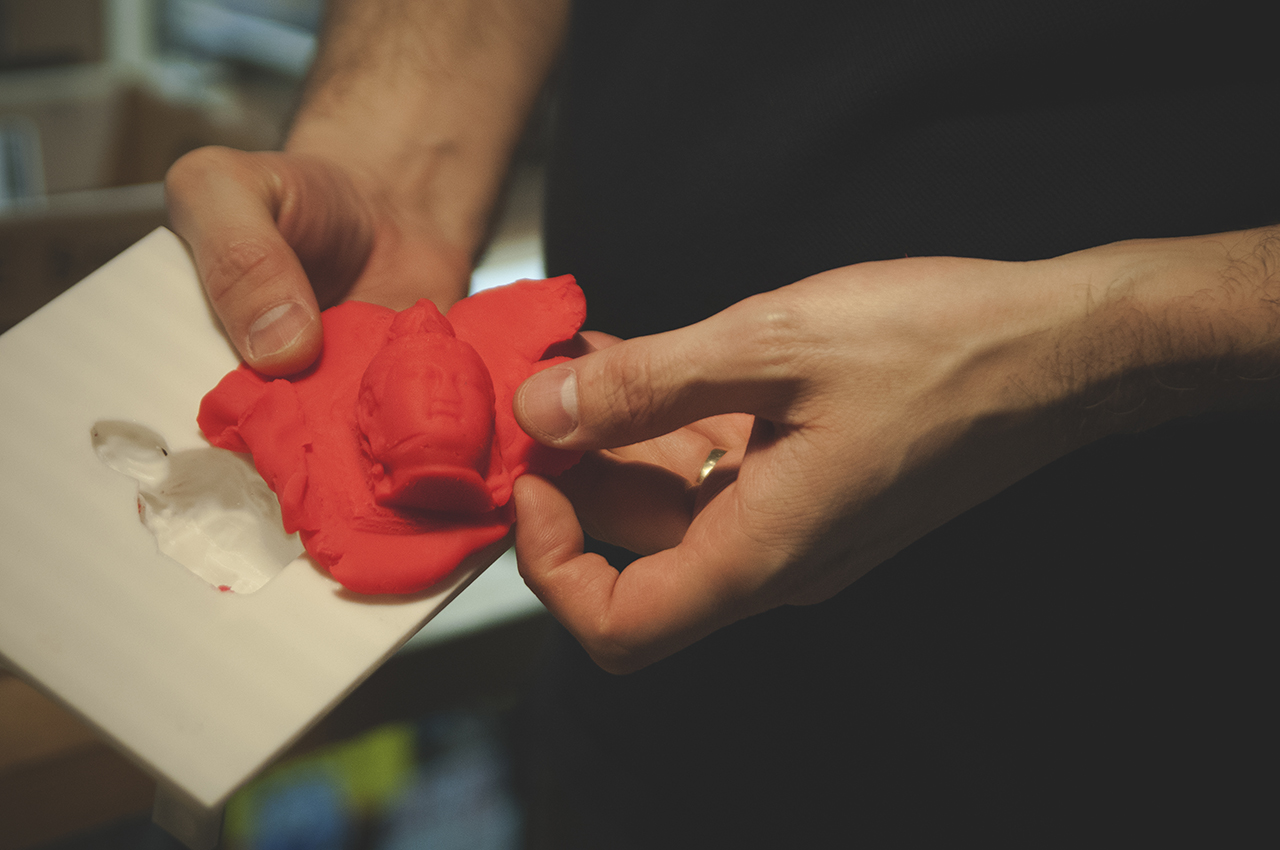
A lot of my work is located in 3D scanning. I’m really curious about the relationship between 3D scanning and photography. The main method of scanning that I employ is digital photogrammetry. In this method I capture a series of overlapping images of a scene or object and use software to stitch these images together to create a 3D form. It is sort of like the opposite of making a panorama image, instead the space is collapsed on itself to form an object. I’m fascinated by the objects 3D printed from this technique. I mean what are they? While they share characteristics of a photograph in terms of representation they are objects rather than images. They are copies of an object—but they are not exact replicas either. In a sense they are 3D photographs and we need to shift our perception of what photography is to include these new forms. I’ve been searching for a word to describe them, the French inventor and sculptor Francois Willeme patented a process in the late 19th century called Photosculpture. He pioneered an early form of photogrammetry to fabricate a form in the round from the profiles of sitters captured with an array of photographic apparatus. I quite like thinking about 3D scans as a form of fascia or facade – we’re capturing the surface only in this technique and so it seems appropriate to describe the objects with these types of limits in mind. What I really enjoy with 3D scanning is taking something like an artwork from the Art Institute, and placing the work out of time—removing them from the space-time continuum. I think of the 3D scan like the DNA of an object’s likeness. You take these scans out of time and transmit them through space. Objects are no longer just about their physicality, it is about their immateriality, variability, contingency, etc.
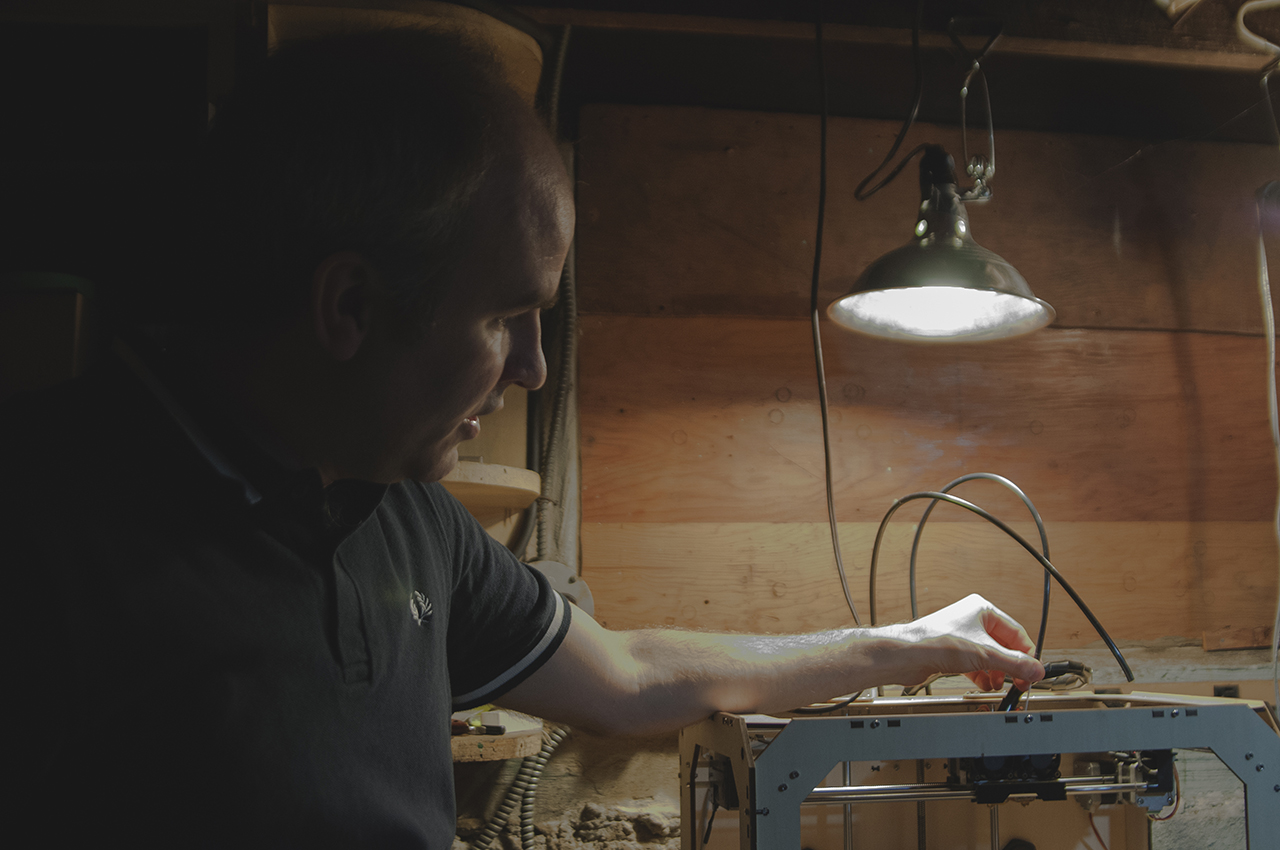
What are the political implications regarding your 3D printed books Folium and Orihon—taking art objects that people might not be able to see or touch in person and making them publicly available?
That’s a big part of this work—democratizing art objects. Sometimes people question whether my publically-sourced books take away from the aura of the object? I actually think it adds to it. Recently in one of my sculpture class critiques, one of the students made a clay torso and a similar version on the computer. The student asked which of the two were more important. The class as a whole said neither—they are equally important. I disagreed and explained I thought the digital object was more important because it can be transmitted and fabricated in many different forms. It is variable, it could be made quite small or very big and it transcends the photograph. If the photograph of an image makes everything “live forever” then the 3D scan and derivative object is a force multiplier for that. When you think about much of the destruction that has been wrought recently on cultural objects by groups like ISIS, that is nothing new. Cultural objects are always under threat, especially in times of war. Museums, after all are collections of objects that survived, that endured earthquakes, volcanos and other “natural” forces. If 3D scans exist of those objects, then they are not lost, they can be refabricated. I am really interested in this idea of digitizing as much as possible and putting it out into the world and see what people do with it.
Another thing to keep in mind is a lot of this stuff is not covered by copyright. A lot of this stuff is in the public domain anyway. A lot of the institutions keep them inside their walls because people need to look after them. I don’t think anybody is not going to go see a piece in person just because they have downloaded it. I think the reverse is probably true. You are much more likely to go to the museum and see this thing because you have a relationship to it.
How do you approach idea of ownership—having a miniature version of the actual sculpture?
Well in terms of copyright I’ve been careful to only scan pieces that are in the public domain, so the idea of ownership is somewhat moot, as in theory these works belong to the public commons. As for appropriated works from the Internet again I try to make sure anything I use has been shared using Creative Commons with a commercial license and that I credit the source.
Both Folium and Orihon are meta objects. They contain copies of a things, they are things in themselves, and a means to make more copies both directly as molds and indirectly as STL files. When I was developing Orihon I was thinking about how someone might make a photocopy of it, in the same way they might do that with a normal book. They couldn’t easily just put in on a copier. I realized that if I made the positive and the negative someone could take a piece of Play-Doh or another malleable material and knead it in the back to make a copy of the object. In this fashion the book is not just an object, but a producer of objects. Then when the files of this are online you have a producer of a producer of a producer of objects. I love sharing my things on Thingiverse because the interface of the website really makes clear the linkages and lineages between objects and reference material making those things evident and explicit. Content creators are constantly borrowing, appropriating and referencing the images and objects from a range of sources. Nothing is created in a vacuum, yet that is not really made explicit. So the Orihon page on Thingiverse for example links to the scans of the Olmec Head, the Roman Armor, and Bodhisatva scans plus the pins I used to connect the pages. In this way it provides a measure of transparency regarding source material and inspiration


